Donna returned to St. Thomas as scheduled on April 12 and we found time to pick up some groceries before departing the USVI. On the way out of St. Thomas on April 14 we stopped to take on diesel fuel for the first time since departing Norfolk last November. To fill the tanks we needed 109 gallons, a little over half our fuel capacity. Only 109 gallons for 5 months of cruising! It was tempting to try to make it all the way back to the US before buying fuel, but with spring's lighter winds and the continuing price inflation, we decided to be prudent....
Leaving St. Thomas we headed due west to the "Spanish" Virgin Islands - the group of islands also known as the Passage Islands located between St. Thomas and Puerto Rico. They are part of the PR territory and include Vieques and Culebra - the two largest islands and the only populated ones in the group. Compared to St. Thomas - only 15 miles to the east - these islands are significantly less developed. We visited several anchorages around Culebra and Vieques and enjoyed the serenity of remoteness that existed in most spots.
Arriving first at Culebra the afternoon of the 14th, we anchored at Ensenada Honda briefly to visit the tourist office, and then moved a short distance to Ensenada Dakity for two nights. While there Dave went up the mast again and installed a second masthead crane sheave he acquired in St. Thomas for the mainsail halyard that should resolve the chafe problem long enough for us to get back to Virginia. We left the spare halyard installed to test out the new sheave before switching back to the primary halyard. More troubleshooting on the tricolor navigation light was unsuccessful.
On the 16th we circumnavigated Culebra clockwise to view its many bays and record on our charts the number of moorings provided free of charge at each location. We moored at Isla Culebrita, a small island just northeast of Culebra, following our circumnavigation, did some snorkeling, and sailed south to Vieques on the following day.
Vieques was once a major bombing/artillery range of the US Navy and is uninhabited on the eastern half. There are posted warnings of unexploded ordnance along the shore and in the bays, but the remoteness of this island is a big attraction for cruising yachts - including us. We honored the "No Pase" signs on the beach, but we did see ample examples of military weapons and debris while snorkeling. A bit scary, actually.... The US Navy presence is now greatly reduced at Vieques, but in some ways has been replaced by the affectionately known "Puerto Rican Navy" - great numbers of recreational power boats from nearby Puerto Rico that spend weekends at these "out islands".
At Vieques we enjoyed anchorages at Ensenada Honda and Bahia Salina del Sur on the southern coast, and the absolutely lovely Bahia Icacos on the northern shore which we were fortunate to visit because the extremely light winds allowed us to anchor on this side of the island. While at Bahia Icacos, the light conditions also allowed Dave to ascend the mast once again to swap the spare and primary mainsail halyards as the new masthead crane sheave was working well.
On April 22nd we motored in glass calm conditions back north toward Culebra and moored at Cayo Luis Pena, a small island on the south side of Culebra, for two nights. While there Dave went up the mast one more time with a new idea to fix the tricolor light and was successful! Now we could make our upcoming night passages without using the deck level navigation lights which use more power and can be annoying to nighttime eyesight. Maybe this means no more trips to the top of the mast...
At Cayo Luis Pena we met new friends LaRue and Susan on S/V Southern Cross and visited each others' boats for early evening relaxation (aka Happy Hour). We had to do it two days in a row to get it right….
Another Group of Virgins
Saturday, April 23, 2011
 Cayo de Luis Pena, Culebra, Puerto Rico
Cayo de Luis Pena, Culebra, Puerto Rico
Other Entries
-
147Exclusive Mustique
Jan 2687 days prior Mustique, Grenadines/St Vincentphoto_camera10videocam 0comment 0
Mustique, Grenadines/St Vincentphoto_camera10videocam 0comment 0 -
148Bequia, part Deux
Jan 2786 days prior Bequia, Grenadines/St Vincentphoto_camera4videocam 0comment 0
Bequia, Grenadines/St Vincentphoto_camera4videocam 0comment 0 -
149A Shore Thing – St Vincent to St Lucia
Jan 2984 days prior Marigot Bay, Saint Luciaphoto_camera3videocam 0comment 0
Marigot Bay, Saint Luciaphoto_camera3videocam 0comment 0 -
150St Lucia to Dominica
Jan 3083 days prior Portsmouth, Dominicaphoto_camera1videocam 0comment 0
Portsmouth, Dominicaphoto_camera1videocam 0comment 0 -
151The Sounds of Parrots Squawking
Feb 0181 days prior Portsmouth, Dominicaphoto_camera2videocam 0comment 0
Portsmouth, Dominicaphoto_camera2videocam 0comment 0 -
152Onward to Guadeloupe and Antigua
Feb 0478 days prior English Harbour, Antigua and Barbudaphoto_camera15videocam 0comment 0
English Harbour, Antigua and Barbudaphoto_camera15videocam 0comment 0 -
153Could anyplace be more gorgeous than Barbuda?
Feb 1171 days prior Codrington, Antigua and Barbudaphoto_camera16videocam 1comment 0
Codrington, Antigua and Barbudaphoto_camera16videocam 1comment 0 -
154St. Barth’s
Feb 1369 days priorGustaviaphoto_camera5videocam 0comment 0 -
155Two for the high price of one – Sint Maarten
Feb 1567 days prior Simpson Bay, Saint Martinphoto_camera5videocam 0comment 0
Simpson Bay, Saint Martinphoto_camera5videocam 0comment 0 -
156Twice Around the Island – The Big Race
Feb 2260 days prior Simpson Bay, Saint Martinphoto_camera10videocam 0comment 0
Simpson Bay, Saint Martinphoto_camera10videocam 0comment 0 -
157The Morning After the Night Before
Feb 2755 days prior Simpson Bay, Saint Martinphoto_camera4videocam 0comment 0
Simpson Bay, Saint Martinphoto_camera4videocam 0comment 0 -
158Next stop – Virgin Gorda, BVI
Feb 2854 days prior North Sound, Virgin Islands Britishphoto_camera18videocam 0comment 0
North Sound, Virgin Islands Britishphoto_camera18videocam 0comment 0 -
159Touring BVI with Wally and Larry
Mar 0351 days prior Anegada, Virgin Islands Britishphoto_camera31videocam 0comment 0
Anegada, Virgin Islands Britishphoto_camera31videocam 0comment 0 -
160Return to North Gorda Sound
Mar 0648 days prior Trellis Bay, Virgin Islands Britishphoto_camera1videocam 0comment 0
Trellis Bay, Virgin Islands Britishphoto_camera1videocam 0comment 0 -
161It Ain’t All Rum and Mangoes
Mar 2232 days prior Soper's Hole, Virgin Islands USphoto_camera1videocam 0comment 0
Soper's Hole, Virgin Islands USphoto_camera1videocam 0comment 0 -
162National Park Highlights on St John, USVI
Mar 2331 days prior Caneel Bay, Virgin Islands USphoto_camera1videocam 0comment 0
Caneel Bay, Virgin Islands USphoto_camera1videocam 0comment 0 -
163The Definition of Cruising
Apr 0320 days prior Charlotte Amalie, Virgin Islands USphoto_camera1videocam 0comment 0
Charlotte Amalie, Virgin Islands USphoto_camera1videocam 0comment 0 -
164Another Group of Virgins
Apr 23 Cayo de Luis Pena, Puerto Ricophoto_camera20videocam 1comment 0
Cayo de Luis Pena, Puerto Ricophoto_camera20videocam 1comment 0 -
165Passage to the Turks and Caicos Islands
Apr 274 days later French Cay, Turks and Caicosphoto_camera12videocam 1comment 0
French Cay, Turks and Caicosphoto_camera12videocam 1comment 0 -
166Overnight Passage to the Bahamas
May 018 days later Salina Point, Bahamasphoto_camera8videocam 2comment 0
Salina Point, Bahamasphoto_camera8videocam 2comment 0 -
167Passage Through the Jumentos and Hog Cay Cut
May 0512 days later Hog Cay Cut, Bahamasphoto_camera5videocam 0comment 0
Hog Cay Cut, Bahamasphoto_camera5videocam 0comment 0 -
168Transiting from the Exuma Sound to the Exuma Bank
May 0916 days later Highborne Cay, Bahamasphoto_camera17videocam 2comment 0
Highborne Cay, Bahamasphoto_camera17videocam 2comment 0 -
169Northward to the Berry Islands
May 1623 days later Great Harbour Cay, Bahamasphoto_camera7videocam 0comment 0
Great Harbour Cay, Bahamasphoto_camera7videocam 0comment 0 -
170To Sail or Not to Sail
May 2330 days later Palm Beach, United Statesphoto_camera3videocam 0comment 0
Palm Beach, United Statesphoto_camera3videocam 0comment 0 -
171Homeward Bound
May 3037 days later Willoughby Harbor Marina, United Statesphoto_camera8videocam 0comment 0
Willoughby Harbor Marina, United Statesphoto_camera8videocam 0comment 0 -
172Hobie Fleet 32 Day Sail
Jul 0371 days later Willoughby Harbor Marina, United Statesphoto_camera11videocam 0comment 0
Willoughby Harbor Marina, United Statesphoto_camera11videocam 0comment 0 -
1732011 Summer Maintenance
Nov 01192 days later Reedville, United Statesphoto_camera10videocam 0comment 0
Reedville, United Statesphoto_camera10videocam 0comment 0 -
174Preparations for 2011 Passage to Eastern Caribbean
Nov 10201 days later Reedville, United Statesphoto_camera4videocam 0comment 0
Reedville, United Statesphoto_camera4videocam 0comment 0 -
175First 3 Days of Passage Norfolk to Virgin Islands
Nov 13204 days later Somewhere in the Atlantic Ocean, Internationalphoto_camera8videocam 2comment 0
Somewhere in the Atlantic Ocean, Internationalphoto_camera8videocam 2comment 0 -
176Mild Conditions and the Mid-Ocean Swim -Days 4 + 5
Nov 15206 days later Somewhere In The Atlantic Ocean, Internationalphoto_camera11videocam 1comment 0
Somewhere In The Atlantic Ocean, Internationalphoto_camera11videocam 1comment 0 -
177Our Progress Speeds Up – Days 6 and 7
Nov 17208 days later Somewhere in Atlantic Ocean, Internationalphoto_camera1videocam 0comment 0
Somewhere in Atlantic Ocean, Internationalphoto_camera1videocam 0comment 0 -
178Targeting a Daylight Arrival –The Final Days
Nov 19210 days later Soper's Hole, Virgin Islands USphoto_camera12videocam 0comment 0
Soper's Hole, Virgin Islands USphoto_camera12videocam 0comment 0 -
179Destination U.S. Virgin Islands with Wally and Bob
Nov 23214 days later Charlotte Amalie, Virgin Islands USphoto_camera17videocam 0comment 0
Charlotte Amalie, Virgin Islands USphoto_camera17videocam 0comment 0 -
180Settling Into Another Season in Paradise
Dec 03224 days later St Croix, Virgin Islands USphoto_camera25videocam 1comment 0
St Croix, Virgin Islands USphoto_camera25videocam 1comment 0 -
181Our Return to the Spanish Virgin Islands
Dec 14235 days later Culebra, Puerto Ricophoto_camera26videocam 1comment 0
Culebra, Puerto Ricophoto_camera26videocam 1comment 0 -
182Eastward Bound
Dec 18239 days later Charlotte Amalie, Virgin Islands USphoto_camera1videocam 0comment 0
Charlotte Amalie, Virgin Islands USphoto_camera1videocam 0comment 0

 Cayo de Luis Pena, Culebra, Puerto Rico
Cayo de Luis Pena, Culebra, Puerto Rico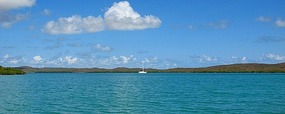
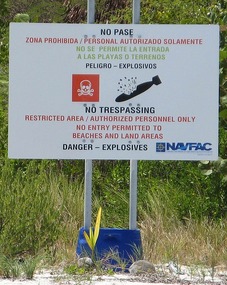
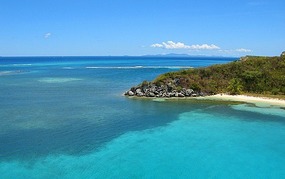
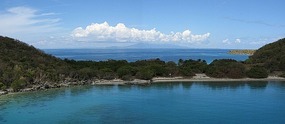















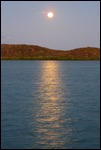
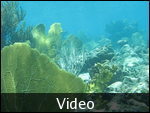
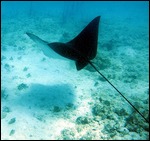

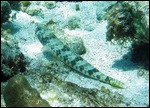
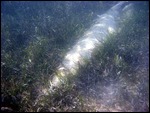

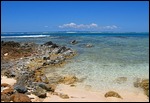
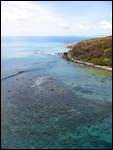

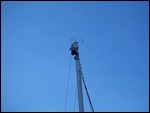
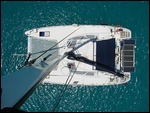
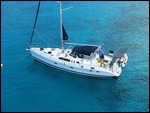
2025-05-23